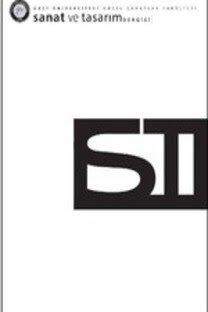Temmoku Sırları
Temmoku sırlar keşfedildiğinden bu yana, en önemli sırlardan biri olmuştur. Temmoku sırların üretimi, Çin’de Sung (960–1279) hanedanlığı döneminde siyah ve kahverengi sırların üretimi ile başladı. Sung Hanedanlığı döneminde temmoku sırlı Jian kaseler, Kuzey Sung mahkemeleri tarafından büyük takdir gördü ve bu kaseleri imparatorluk kullanım için onaylandı. Bu arada, Temmoku sırlı kaseler, Kuzey Sung ve Budist manastır toplulukları arasında son derece moda oldu. Temmoku sırların adı, Çin’de Fujian ilinden gelmektedir. Japonlar Çin’de Tianmu Shan olarak bilinen dağ içinde yer alan bir manastırı ziyaretleri sırasında, birkaç Jian çay kasesini almışlar ve daha sonra bunlardan esinlenerek görünüşlerini taklit etmişlerdir. Batı Zhejiang ilindeki Tienmu Budist tapınağında temmoku kaselerin kullanımı, 12. yüzyılda Japonya’ya sıçramış ve ortaçağda Japonlar ta- rafından kabul görmüş, sonra Japonya’da çay törenlerinde değerli ögeler olmaya başlamıştır. Japonlar kaseleri Tianmu veya Temmoku olarak adlandırmışlardır. Bugün, Temmoku terimi hem Çin hem de Japon kahverengi sır ve genellikle kahverengi seramikleri ifade etmek için tüm dünyada yaygın olarak kullanılmaktadır. Buna ek olarak, temmoku terimi; demirce doyurulmuş sırları, çay külü, yağ benekli, tavşan kürk, yohen, yuteki ve benzeri sırları da ifade etmektedir. Bu çalışmada, temmoku sırlarının tarihsel gelişimi ve özellikleri incelenmiş ve temmoku sırı çalışan sanatçıların çalışmalarından örnekler verilmiştir.
Anahtar Kelimeler:
Temmoku, Çay Külü, Yağ benekli, Yohen and YutekiTemmoku
Temmoku Glazes
Temmoku glazes have been one of the most important glazes ever since discovered. The prodoction of temmoku glazes began with the discovery of black and brown glazes du- ring the Sung (960–1279 A.D.) dynasties of China. During Sung dynasty Jian Temmoku glazed bowls were accepted as tribute wares by the Northern Sung court, and were app- roved for imperial use. Meanwhile, Temmoku glazed bowls became extremly fashionable amongst Nortern Sung Society and in Buddhist monastic communities. The name of Temmoku glazes comes from a province of Fujian in China. When The Japanese visited a monastery in a chinese montain which is called Tianmu Shan, They bought some Jian tea bowls, and later they were inspired to imitate their look. From the Tienmu Buddhist temple in western Zhejiang province their use sprad to Japan in the 12th century, where they were ferevently admired by the medieval Japanese, and later becoming treasured items in the Japanese tea ceramony. They called bowls as Tianmu or Temmoku. Today, the term Temmoku is widely used in all the world to discribe both Chinese-Japane- se blackware glazes and blackware in general. In addition to this, the term temmoku come to refer to iron saturat, tea dust, oil spot, hare’s fur, yohen, yuteki, and so on. In this study, historical development and specification of temmoku glazes were investigated and were given example of the work of artists working on temmoku glazes.
Keywords:
Temmoku Tea Dust, Hare’s Fur, Oil Spot, Yohen and Yuteki Temmoku,
___
- BRITT, John (2005). “Oil-Spot Glazes”, Ceramics Techical, No. 21
- CHAPPELL, James (1997). The Potter’s Complete Book of Clay and Glazes, New York,
- FUJII, Naoyuki (1982). “Magnetite in Yuteki-Temmoku (oil-spot) Glaze”, Bulletion of Kanazawa College of Art, Vol. 26
- GRAHAM, David Crockett (1938). “Temmoku Porcelain in Szechwan Province, China”, Published by Royal Anthropolo- gical Institute of Great Britain and Ireland, Man, Vol. 38, November
- HOBSON, R. L. (1934). “Sung and Yuan Wares in Corean Tombs, The Burlington Magazine for Connoisseurs”, The Burlington Magazine Publication, Vol. 64, No. 374
- KOONS, Joe (2005). “A Collaboration in Temmoku”, Ceramics Monthly
- TAÇYILDIZ, Ensar (2010). Temmoku Sırlarının Araştırılması, Anadolu Üniversitesi Güzel Sanatlar Enstitüsü,
- Yayınlanmamış Sanatta Yeterlik Tezi
- WOOD, Nigel (2007). Chinese Glazes, Their Orgins, Chemistry and Re-Creation, The University of Pennsylvania Press
- ISSN: 1308-2264
- Yayın Aralığı: Yılda 2 Sayı
- Başlangıç: 2015
- Yayıncı: Ankara Hacı Bayram Veli Üniversitesi
Sayıdaki Diğer Makaleler
Dharavi - Kumbharwada Çömlekçileri
Bir Malzeme Olarak Seramiğin Kuşevlerinde Kullanılması
Doğu'yu Batı'ya Doğru Heykelle Yorumlamak ve Isamu Noguchi
Tarihsel Süreç İçerisinde Oyuncağın Gelişimi ve Seramik Oyuncaklar
Oyuncak Türü Olarak Pişmiş Toprak Düdükler
Güney Kore'li Besteci Isang Yun'un Zorlu Geçen Yaşamı ve Tanınmış Eserleri
Osmanlı Döneminde İstanbul'da Yaşam ve Türk Resim Sanatında Çağdaş Dönem Öncesi Yansımaları
Mekanikleşen Dünyada İnsani Değerleri Arayan Sanatçı
Balıkesir Dursunbey Kilinin Seramik Bünyelerde Hammadde olarak Kullanımı
